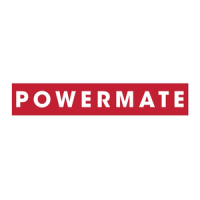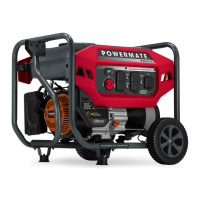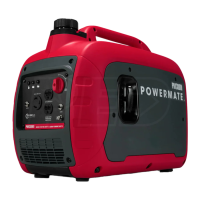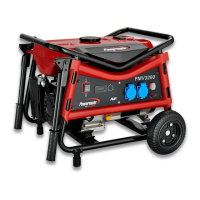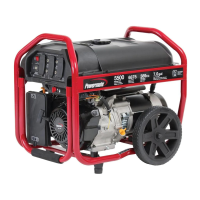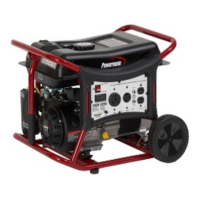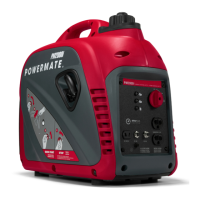
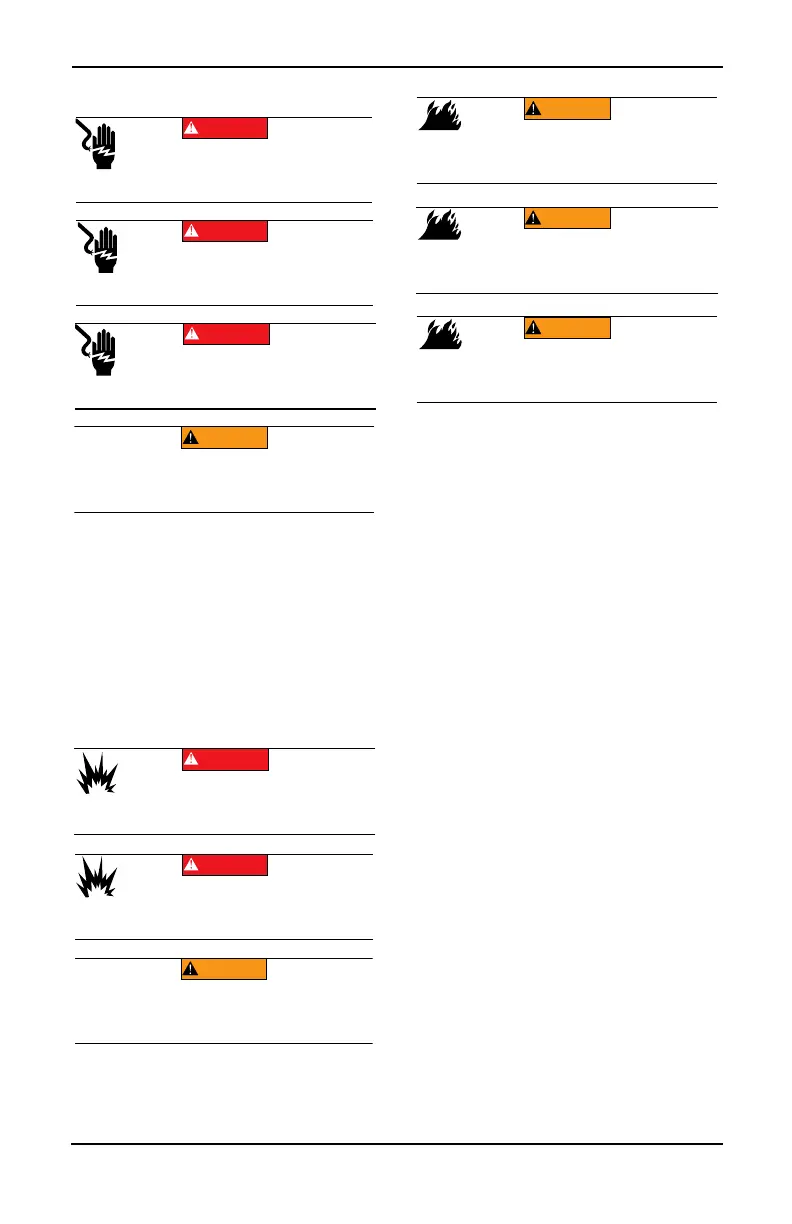
Do you have a question about the Powermate PM2000i and is the answer not in the manual?
| Brand | Powermate |
|---|---|
| Model | PM2000i |
| Category | Portable Generator |
| Language | English |
Manufacturer cannot anticipate all hazards. Observe warnings carefully. Common sense and strict compliance are essential.
Definitions of DANGER, WARNING, CAUTION, and NOTE blocks used to alert personnel to hazardous situations.
Hazards associated with generator exhaust and operating locations, including carbon monoxide risks.
Risks of electrocution from contact with bare wires, water, or improper connection to power.
Risks of explosion and fire due to flammable fuel and vapors, and hot surfaces.
Basic information about the generator's features, controls, and model identification.
Detailed technical specifications for the PM2000i and PM2200i generator models.
Details on the 120V AC duplex receptacle and its power capacity.
Explanation of the PowerDial switch for controlling engine operation and choke.
Explanation of the Overload, Low Oil Level, and Power LEDs on the control panel.
Information on AC and DC circuit protectors that prevent overload and short circuits.
Step-by-step guide for adding the correct type and amount of engine oil before operation.
Guidelines for using the correct type of gasoline, fuel requirements, and safe fueling procedures.
Safety precautions and steps to take before operating the generator, including exhaust and fire hazards.
Explanation of the generator's equipment ground connection and neutral floating status.
Guidance on calculating wattage requirements for connected devices to prevent overloading.
Step-by-step instructions on how to safely start the generator using the recoil starter.
Explanation of the automatic engine shutdown feature triggered by low oil levels.
Instructions for safely charging a 12V DC battery using the generator's output.
Instructions for operating two generators in parallel using an optional Powermate Parallel Kit for increased output.
A detailed schedule of recommended maintenance tasks and their intervals.
Procedures for keeping the generator clean and free from dirt or debris to prevent damage.
General guidelines for engine maintenance, including safety precautions like disconnecting the spark plug wire.
Procedure for checking the engine oil level using the dipstick to ensure it is within the safe operating range.
Detailed steps for changing the engine oil, including draining and refilling with the correct oil.
Instructions for servicing the air filter to ensure proper engine performance and prevent damage.
Procedure for inspecting, cleaning, and gapping or replacing the spark plug.
Steps for removing, inspecting, and cleaning the spark arrestor screen in the muffler.
Instructions for preparing the generator for long-term storage, including fuel treatment and engine preparation.
Common causes and corrective actions when the generator engine fails to start.
Troubleshooting steps for when the generator engine starts but then stops unexpectedly.
Solutions for issues where the engine fails to start or runs erratically.
Steps to diagnose and resolve problems related to the generator not producing AC power.
Simple check for fuel leaks originating from drain hoses, specifically related to the carburetor bowl.

